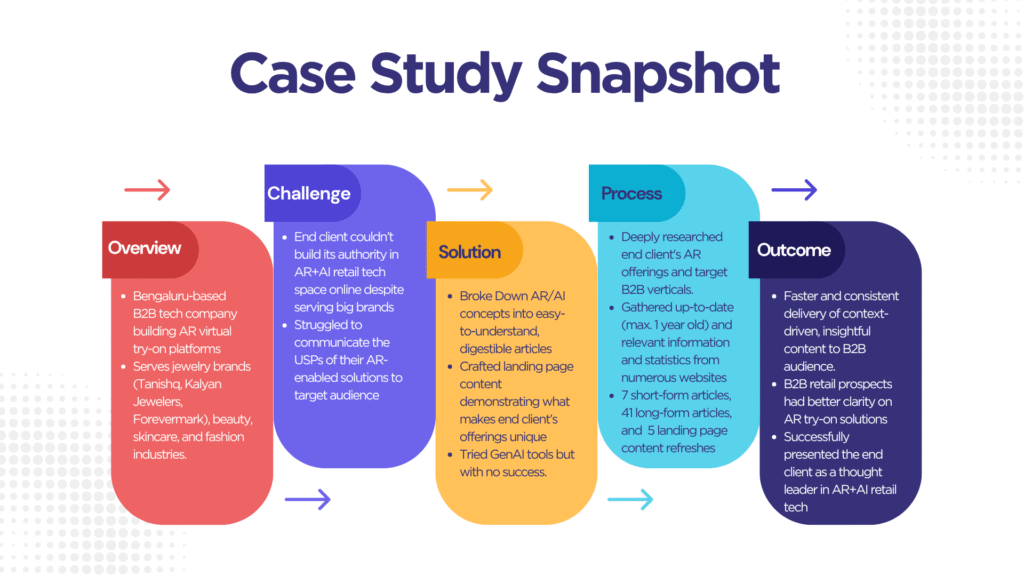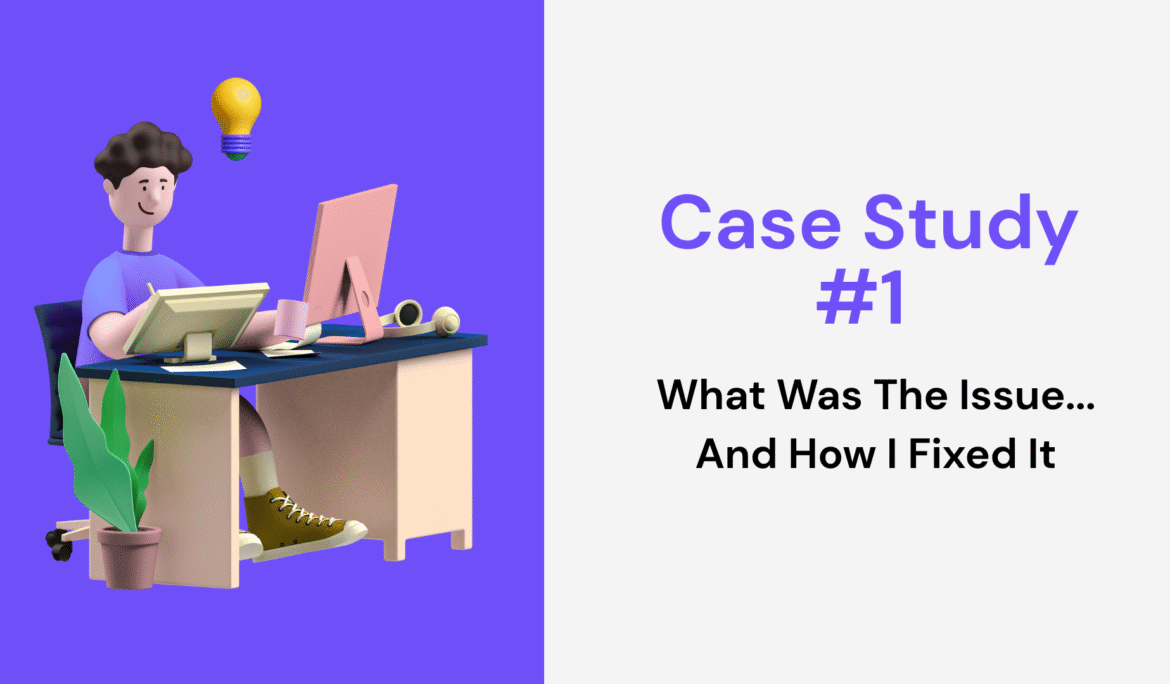Do you know that the global market of virtual try-on solutions—powered by augmented reality (AR) and artificial intelligence (AI)—is poised to snowball 4X from 2024 through the end of this decade?
These leading-edge technologies have brought a new dimension to e-Commerce by helping brands offer customers hyper-engaging and -personalized shopping experiences. Early adopters have already added them to their online shopping toolkit for long-term customer stickiness.
Realizing the trend shift, one Bengaluru-based, forward-thinking B2B tech company pounced on the opportunity. It started building virtual try-on platforms primarily for jewelry brands (like Tanishq, Kalyan Jewelers, and Forevermark) that are compatible across websites, socials, and physical stores. The tech provider then expanded its portfolio across the beauty, skincare, and fashion industries.
So, What Was the Problem?
While the end client was winning its customers’ hearts with incredible virtual try-on tools, it wasn’t able to spread the word about the technology to its B2B audience online. Given their complex suite of AR-enabled products, their key challenge was to convey the importance, benefits, and potential trends of these innovations to B2B companies—many of whom were unaware of AR’s strategic potential.
So, the end client needed website content that helped accomplish this seemingly tough mission in a clear, compelling way. And by doing so, they wanted to stamp their authority in the “AR+AI” retail space.
On top of that, they wanted their landing pages to highlight their offerings’ unique selling propositions (USP). Simply put, the entire idea was that when a B2B customer lands on one of the web pages, they’d instantly get what the client offers, how it works, and what perks it brings to their own customers.
What Did I Have to Do?
As a freelance content writer working with the Indian arm of a globally recognized digital marketing agency, I (gladly) took up the project—complete content creation for the end client.
The agency’s content team sent me the briefs, SEO requirements, and editorial guidelines. My job was to break down the hard-to-understand concepts into compelling, on-brand content while ticking those checkboxes.
Crystal-clear and smooth! (Yet head-scratching, LOL)
How Did I Do It?
For every piece, I dug deep into the end client’s offerings, majorly AR virtual tryons, their target B2B verticals (jewelry, fashion, eyewear, and beauty), and what made them stand out.
Simultaneously, I scoured through n-number of websites to know more about AR-enabled virtual tryons, had to click “next” on search result pages multiple times. For more up-to-date info, I set the settings of the search results to “past year.”
Plus, I took cues from these websites to figure out how to craft intros, outros, and the remaining body part as catchy and engaging as possible. That included sentence formations, vocabulary, and a continuous flow between paragraphs.
Besides, I extracted relevant statistics from those websites to support any statement, and verified that their primary sources are max a year old.
Lastly, I gave a test-drive to Gen AI tools for research just to see whether they were worth the fame they amassed (Back in 2022). Unfortunately, the bubble burst! I face-palmed and decided to better bank on Google.
This was my general approach while writing the various types of content: short-form (up to 1000 words), long-form (more than 1000 words), and landing page refreshes.
- Short-form articles had to be concise yet informative, enough to intrigue and inform the end client’s target audience on current trends in retail AR tech.
- Long-form articles had to be in-depth thought leadership pieces that turned complex AR/AI-related concepts and trends into digestible, value-driven narratives for their B2B customers.
- Certain landing pages (LP) contained more catchy headlines, strengthened value propositions, and clear and persuasive CTAs to make their AR-enabled solutions truly irresistible. I tailored every LP content according to the industry, like jewelry, fashion, and beauty.
Although I wasn’t involved in content strategy directly, I ensured all content pieces echoed the end client’s positioning and the digital marketing agency’s high editorial standards. For that, I chit-chatted with my point of contact at the agency whenever I felt stuck.
What Content Did I Deliver?
These were the deliverables by the end of the project:
- 7 short-form articles (500-1000 words)
- 30 articles were 1000-1500
- 41 long-form articles (1000 and above words), of which
- 10 articles were 1500-2000 words
- 1 article was 2000-2500 words
- 5 landing page content refreshes
What Were The Results?
While I couldn’t access the backend performance metrics (as I am a third-party consultant), the qualitative outcomes were clear and positive:
My content got “thumbs up” from the agency’s and the end client’s respective in-house teams with minimal to zero revisions. (Phew!)
- Insightfulness: Checked ✅
- Readability: Checked✅
- Clarity: Checked✅
- Adherence to guidelines: Checked✅

Although there were slight delays sometimes—writer’s block (IYKYK)—I submitted almost every deliverable well on time.
The end client’s publishing workflow got smoothened out, as my content was often ready to go live right after submission and proofreading. This meant they could reach their B2B audience with context-driven, insight-laced content faster.
(Note: I handled this project work under the umbrella of the digital marketing agency, with the end client being theirs. While I don’t have direct permission to name them publicly, I retain all original drafts and project records (written by me) as proof of authorship.)


